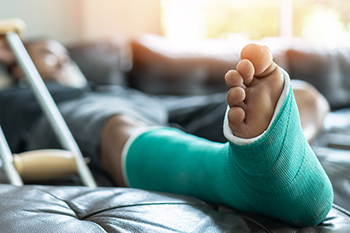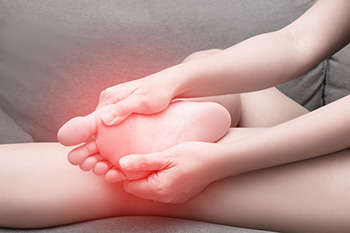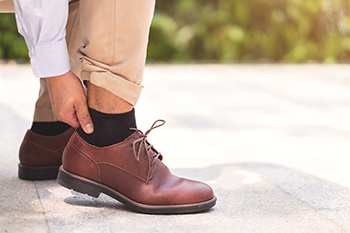
When people break a foot, they are mostly unaware of the complications that may occur. These include a failure to completely heal, and surgery may be required to repair the bone and surrounding areas. Additionally, arthritis may develop if the fracture line enters a joint surface, and an open wound from a fracture may become infected. In cases where the foot is crushed, considerable swelling may develop. This may lead to a condition that is known as compartment syndrome. This may affect the patient’s normal blood pressure, and blood flow may be decreased to parts of the foot. A broken foot is diagnosed by having an x-ray taken, and the foot is generally put in a boot or a cast. This is typically an effective method in providing stability as the healing process takes place. People who enjoy high-impact sports may be at an increased risk of incurring a broken foot. It is beneficial to use appropriate protective equipment which may help to reduce the chances of breaking a foot. Severe pain and discomfort often accompanies a broken foot, and the toes may tingle. If you have fallen or think you may have broken your foot in another way, please consult with a chiropodist who can effectively treat this condition.
A foot fracture is a crack or break in a foot bone, often caused by repetitive stress on the foot or a high-impact foot injury. If you’re suffering from foot pain, please consult with one of the chiropodists from The Footcare Centre. Our chiropodists can help you maintain the health of your lower limbs and your mobility.
Symptoms
Pain
Bruising
Tenderness
Swelling
Difficulty walking
Deformity
Causes
Repetitive overloading of the foot
Having a previous fracture
Abnormal foot biomechanics
Changing training surfaces suddenly
Poor footwear
Osteoporosis
High-impact injury
Treatments
Rest
Ice
Elevation
Pain medication
Braces or other orthotics
Casts
Crutches
Surgery in more severe cases
If you have any questions, please feel free to contact our office located in . We offer the newest diagnostic and treatment technologies for all your foot care needs.





